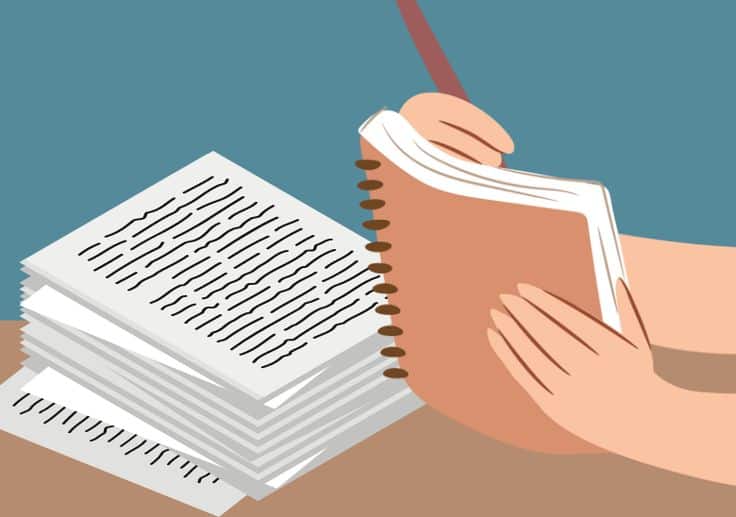
Essay writing can be one of the most stressful academic tasks for students. Between tight deadlines, complex prompts, and mental fatigue, it’s easy to fall into a cycle of procrastination and panic. But writing smarter doesn’t require working harder—it’s about strategy, structure, and mindset. If you often find yourself overwhelmed by essays, you’re not alone. The good news? There are smarter ways to approach the writing process so you can save time, reduce stress, and improve your results.
In moments of academic pressure, many students search for a fast essay writing service to meet urgent deadlines. These services, used with discretion, are often considered by students trying to understand formatting expectations or tackle complex essay types. One commonly mentioned name in these situations is MyAssignmentHelp, though it should be noted that responsible essay writing still starts with the student’s own ideas and structure.
Why Essays Feel Overwhelming

Before improving your writing approach, it’s important to understand why essays tend to feel so difficult in the first place:
- No Clear Plan: Starting an essay without outlining your argument leads to confusion mid-way.
- Topic Uncertainty: Unclear prompts or broad topics cause students to lose direction.
- Perfection Paralysis: Trying to write the perfect sentence on the first try can stall your progress.
- Time Cramming: Leaving everything until the last minute makes it harder to think critically or edit properly.
You don’t need to be a top writer to avoid these pitfalls. You just need a repeatable, efficient process.
Step 1: Outline Before You Write

One of the smartest things you can do before writing is to create a structured outline. This doesn’t have to be fancy—just a basic framework to map out your introduction, body paragraphs, and conclusion.
Here’s a simple template to get you started:
- Introduction
- Hook (grab attention)
- Background/context
- Thesis statement
- Hook (grab attention)
- Body Paragraphs (3 recommended)
- Topic sentence
- Evidence and explanation
- Transition sentence
- Topic sentence
- Conclusion
- Summary of main points
- Restated thesis in a fresh way
- Final thought or call to reflection
Spending 15 minutes on an outline can save you hours during the drafting and editing phases.
Step 2: Write in Short, Focused Sprints

Trying to write an entire essay in one sitting is like running a marathon with no water breaks. Use the Pomodoro technique—set a timer for 25 minutes, focus solely on writing, then take a 5-minute break. After four rounds, take a longer 15-minute break.
This method helps you stay mentally fresh and prevents burnout. It also makes large assignments feel more manageable when you break them down into timed tasks.
Step 3: Use Sample Structures—Not Sample Content

When pressed for time, it’s tempting to look at finished essays online. Instead of borrowing content, borrow structure. Look at how strong essays:
- Introduce a clear thesis
- Transition smoothly between ideas
- Use evidence effectively
- Conclude with impact
You can replicate that structure with your own ideas. Understanding how arguments are built helps you develop your own more logically.
Step 4: Focus on One Paragraph at a Time

Rather than tackling your whole essay at once, focus on writing just one paragraph at a time. Begin with the body paragraphs, since they carry the weight of your argument.
Each paragraph should:
- Open with a clear topic sentence
- Provide evidence, examples, or data
- Explain the connection to the thesis
- End with a sentence that links to the next point
Once your body is solid, you can return to write an introduction that hooks your reader and a conclusion that leaves a lasting impression.
Step 5: Don’t Mix Writing with Editing

Writing and editing are two separate processes. When you try to fix grammar or rephrase sentences while writing your first draft, you slow yourself down.
Here’s a smarter approach:
- Draft First: Focus purely on getting ideas out.
- Edit Later: After a break, review your draft with a fresh mind. Look for grammar, clarity, and logical flow.
- Read Aloud: Reading your essay aloud helps catch awkward phrasing and abrupt transitions.
This two-stage system ensures you keep your writing momentum without compromising quality.
Step 6: Reuse Elements from Past Essays

Chances are, you’ve written on similar topics before. Don’t reinvent the wheel—reuse useful pieces like definitions, statistics, or formats from previous essays (as long as the content is your own).
For instance, if you wrote a strong thesis or a persuasive conclusion in a related subject, you can adapt that structure for your current assignment. Keep a personal database of writing snippets and useful sentence starters for quick reference.
Step 7: Build a Personal Essay Toolkit

Writing smarter also means staying organized. Consider keeping a toolkit with:
- Sentence transition lists (e.g., “however,” “furthermore,” “as a result”)
- Academic phrase banks (e.g., “This suggests that…,” “The evidence points to…”)
- Citation style cheat sheets (APA, MLA, etc.)
- Common feedback you’ve received from professors
Having these tools ready allows you to write with consistency and reduces the cognitive load of looking things up repeatedly.
Final Thoughts: Efficient Writers Are Made, Not Born
No one is born knowing how to write great essays under pressure. Writing smarter is about developing routines, working in small stages, and planning ahead. You don’t need late-night stress, endless drafts, or rushed submissions to succeed.
So the next time you feel overwhelmed by a looming deadline, remember: clarity beats complexity. Structure beats panic. And effort beats shortcuts. Whether you’re outlining your ideas, writing in focused sprints, or gradually building stronger habits, every smart step you take makes essay writing easier and more effective.
- 0shares
- Facebook0
- Pinterest0
- Twitter0
- Reddit0













